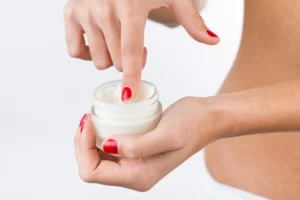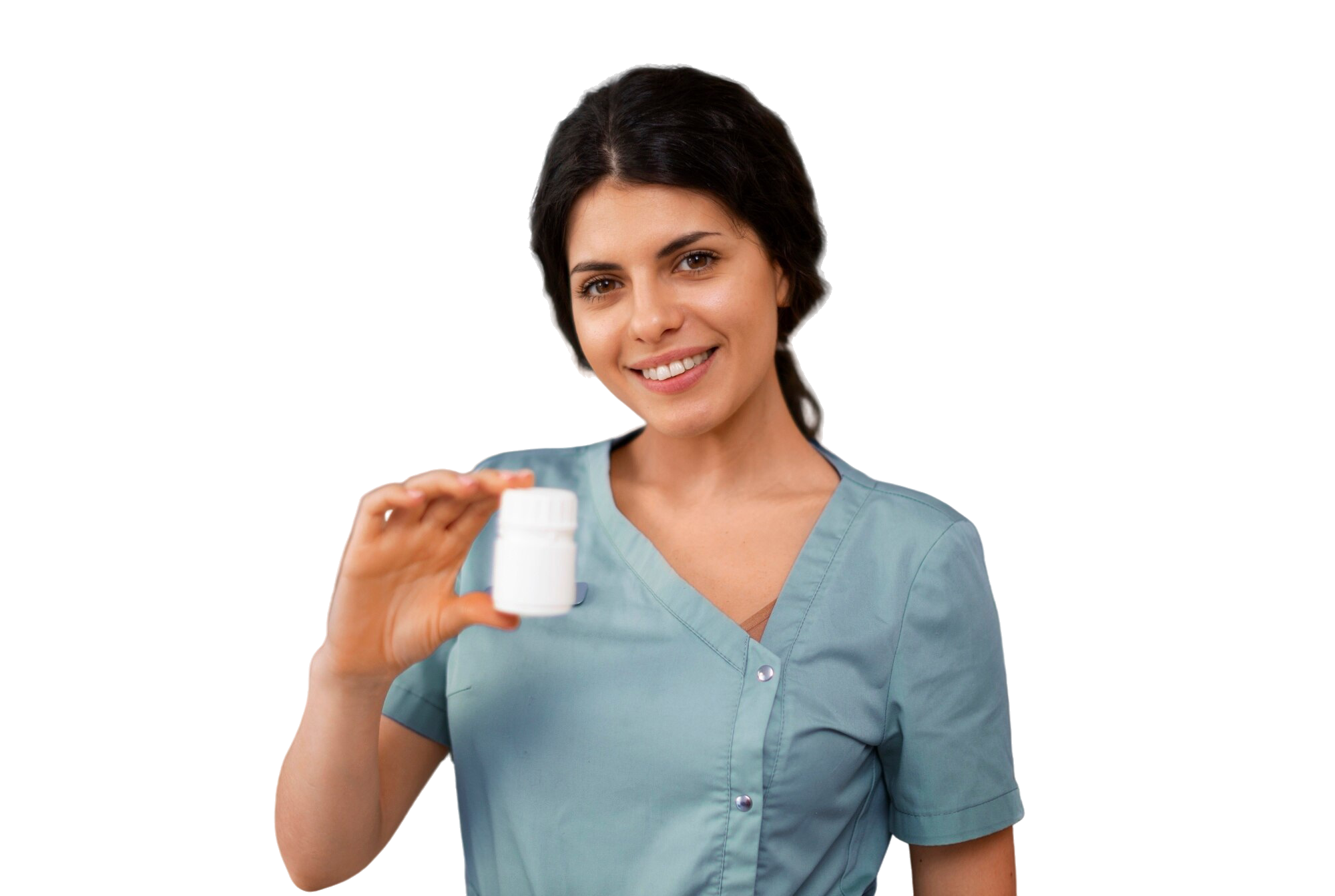Prescription Deodorants for Hyperhidrosis dealing with excessive sweating can be both uncomfortable and embarrassing. If you’re one of the millions of people affected by hyperhidrosis, you know how challenging it can be to manage. Fortunately, there are solutions available, one of which is prescription deodorants. In this guide, we’ll explore what prescription deodorants are, how they work, and what you need to know if you’re considering them as a treatment option.
Hyperhidrosis is a condition characterized by excessive sweating beyond what’s necessary to regulate body temperature. This condition can affect specific areas such as the underarms, palms, feet, or face, or it can occur all over the body. For many, this excessive sweating can interfere with daily activities and impact self-esteem.
Hyperhidrosis is often recognized by the noticeable and frequent episodes of sweating that are not related to physical exertion or heat. Individuals may find themselves changing clothes frequently or avoiding certain fabrics that show sweat easily. The condition can also affect social interactions, leading to anxiety or self-consciousness in public settings. Understanding the symptoms is a crucial first step in seeking appropriate treatment.
The impact of hyperhidrosis on daily life can be profound. Many people with hyperhidrosis avoid certain activities or social situations for fear of sweating excessively. Simple tasks like shaking hands or writing with a pen can become uncomfortable and embarrassing. This can lead to a decrease in quality of life, affecting both personal and professional relationships.
The psychological effects of hyperhidrosis are significant and can include anxiety, depression, and low self-esteem. The constant worry about sweating can dominate thoughts, making it difficult to focus on work or enjoy social interactions. Many individuals with hyperhidrosis report feeling isolated or misunderstood, as the condition is often underestimated by those who do not experience it.
Hyperhidrosis can be classified into two types: primary and secondary. Primary hyperhidrosis has no known medical cause and often runs in families. Secondary hyperhidrosis is typically caused by underlying medical conditions or medications. Identifying the cause is crucial, as it influences the treatment approach.
Primary hyperhidrosis often begins in childhood or adolescence and may be inherited. It typically affects specific areas of the body, such as the palms, soles, underarms, or face. Despite its prevalence, the exact cause of primary hyperhidrosis remains unknown. However, it is believed to be related to overactivity in the sympathetic nervous system, which controls sweating.
Secondary hyperhidrosis is less common and is usually a result of another medical condition. Conditions such as diabetes, menopause, thyroid disorders, and certain infections can lead to excessive sweating. Additionally, some medications, including antidepressants or hormone treatments, can cause secondary hyperhidrosis. Identifying and treating the underlying condition often helps in managing the sweating.
Genetics can play a significant role in hyperhidrosis, particularly in primary cases. If you have a family member with hyperhidrosis, there’s a higher chance you may experience it too. Understanding the genetic component can help in early diagnosis and management, allowing individuals to seek treatment sooner rather than later.
Prescription deodorants, or antiperspirants, are specially formulated products used to manage excessive sweating. Unlike over-the-counter options, these contain higher concentrations of active ingredients, making them more effective for individuals with hyperhidrosis.
The main ingredient in most prescription deodorants is aluminum chloride or similar compounds. These ingredients are much more potent than those found in regular antiperspirants. They work by temporarily blocking the sweat glands, thus reducing the amount of sweat that reaches the skin’s surface. This mechanism is particularly effective for areas like underarms, where sweat can be most bothersome.
Prescription deodorants differ significantly from over-the-counter options not just in concentration but also in application method. While regular antiperspirants are applied daily, prescription options are typically used less frequently due to their strength. This difference can make a significant impact on individuals with hyperhidrosis, offering relief where other products have failed.
It’s important to distinguish between prescription deodorants and clinical strength antiperspirants available over-the-counter. Clinical strength options are stronger than regular antiperspirants but not as potent as prescription versions. For those with severe hyperhidrosis, prescription options are often necessary to achieve adequate sweat control.
Several prescription deodorants are available for those with hyperhidrosis. Some of the commonly prescribed ones include:
- Drysol: A popular choice with high concentrations of aluminum chloride. It is often the first line of treatment for those with underarm sweating.
- Xerac AC: Known for its effectiveness in controlling severe sweating, particularly in areas like the palms and soles, where sweat can be most disruptive.
- Certain Dri Prescription Strength: Available over-the-counter but also comes in prescription strength. It provides a versatile option for those looking to transition from over-the-counter to prescription treatments.
Drysol is often recommended due to its high efficacy in managing underarm sweating. It comes in varying strengths, allowing for customization based on the severity of the condition. Users typically apply Drysol at night to maximize its effectiveness, and it’s important to follow the application instructions carefully to avoid irritation.
Xerac AC is particularly beneficial for areas like palms and soles, where sweat can be difficult to manage. Its formulation is designed to penetrate thicker skin, providing relief where other treatments may not be effective. For many, Xerac AC offers a level of control that significantly improves day-to-day comfort.
Certain Dri offers a unique balance between over-the-counter ease and prescription strength. It’s an excellent option for those transitioning from regular antiperspirants to more potent solutions. Its dual availability means that users can start with the over-the-counter version and move to prescription strength if needed, providing a tailored approach to sweat management.
Using prescription deodorants requires a slightly different approach than regular deodorants. Here’s a step-by-step guide:
Prescription deodorants are most effective when applied to dry skin at night. This allows the active ingredients to work overnight when sweat glands are less active. Applying at night also reduces the risk of skin irritation, as the skin has time to absorb the product without interference from daily activities.
Before applying prescription deodorants, it’s crucial to ensure the skin is clean and completely dry. Moisture can reduce the effectiveness of the product and increase the risk of skin irritation. A thorough cleansing routine helps prepare the skin, maximizing the benefits of the treatment.
Using prescription deodorants sparingly is key. A small amount is typically sufficient, and it’s important to follow the specific instructions provided by your healthcare provider. Applying too much can lead to irritation, so it’s better to start with less and adjust as needed. If irritation occurs, it’s advisable to reduce the frequency of use or consult a doctor.
If you experience irritation, there are several strategies to consider. Reducing the frequency of application can help, as can applying a moisturizing lotion to the area. If irritation persists, consult your healthcare provider to explore alternative treatments or adjustments to your current regimen.
Prescription deodorants offer a higher degree of sweat control compared to over-the-counter options. For individuals with hyperhidrosis, this can mean the difference between confidence and discomfort in social or professional settings. The ability to manage sweating effectively can transform a person’s daily experience, allowing them to focus on tasks without the constant distraction of sweat.
By reducing excessive sweating, prescription deodorants can improve your quality of life. You may find that you’re more comfortable engaging in physical activities or social interactions without the worry of sweat stains or odor. This improvement in comfort can lead to increased participation in activities and social events, enhancing personal and professional relationships.
The confidence boost from using prescription deodorants is often profound. Knowing that sweat won’t be an issue can reduce anxiety in social situations and improve self-esteem. This newfound confidence can have a ripple effect, improving performance at work and enriching personal relationships.
While prescription deodorants are generally safe, they can cause side effects in some individuals. Common side effects include:
- Skin Irritation or Rash: Some users may experience irritation, particularly with initial use. This can often be managed by adjusting the application frequency or using a soothing lotion.
- Itching or Burning Sensation: This is usually temporary and can be alleviated by reducing the amount applied or taking breaks between applications.
- Dry Skin: If dryness occurs, applying a moisturizer can help maintain skin health. It’s essential to choose a moisturizer that doesn’t interfere with the effectiveness of the deodorant.
If side effects become bothersome, it’s important to consult your healthcare provider. They may recommend adjusting the application frequency or trying a different product. Sometimes, a simple change in routine can alleviate discomfort without compromising the effectiveness of the treatment.
If you experience severe side effects or if symptoms persist despite adjustments, it’s crucial to seek medical advice. Your healthcare provider can offer alternatives or additional treatments to help manage your condition effectively. They may also check for any underlying conditions that could be contributing to your symptoms.
For those using prescription deodorants long-term, it’s important to monitor any changes in skin condition or overall health. Regular check-ins with a healthcare provider can ensure that your treatment remains effective and safe. It’s also an opportunity to discuss any concerns or explore new treatment options as they become available.
If prescription deodorants aren’t suitable for you, there are other hyperhidrosis treatments available:
Botox injections are a popular alternative, used to temporarily block nerve signals that cause sweating. The effects can last several months, providing relief for those who find topical treatments ineffective. While Botox is effective, it requires repeat treatments and can be costly.
Certain medications can reduce sweating systemically. These are typically used when topical treatments are not sufficient or for those who experience sweating in multiple areas of the body. Oral medications can have side effects, so it’s important to discuss these with a healthcare provider.
Iontophoresis is a treatment that uses electrical currents to reduce sweating, particularly effective for hands and feet. It involves placing the affected area in water while a mild electrical current is applied. While effective, it requires regular sessions to maintain results.
For severe cases, surgical options like sympathectomy may be considered. This involves cutting nerves that trigger sweating and is usually a last resort due to its invasive nature. Surgery can provide permanent relief but comes with risks and potential side effects.
Research into hyperhidrosis is ongoing, and new treatments continue to emerge. It’s important to stay informed about the latest developments and discuss these options with a healthcare provider. New treatments may offer improved efficacy or reduced side effects, providing additional options for managing hyperhidrosis.
Managing hyperhidrosis can be challenging, but prescription deodorants offer a powerful solution for those struggling with excessive sweating. By understanding how these products work and how to use them effectively, you can take control of your symptoms and improve your overall quality of life. If you’re considering prescription deodorants, consult with a healthcare professional to discuss your options and find the best treatment for your needs.
Remember, you’re not alone in this journey, and effective solutions are available to help you live more comfortably and confidently. With the right approach, you can manage your hyperhidrosis and enjoy a fuller, more active life.


